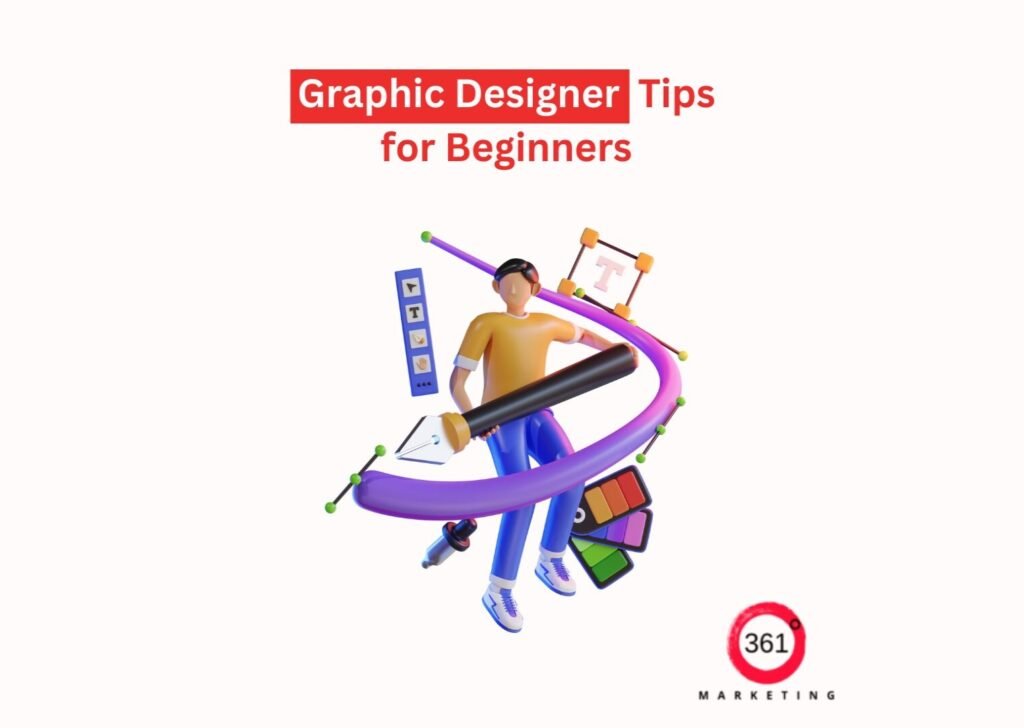Graphic Design Tips for Beginners: Avoiding Common Mistakes
Introduction
Graphic design is a necessary talent for everyone who wants to produce attractive graphics. However, for beginners, the voyage might be fraught with traps that can compromise the quality of your work. In this blog, we’ll go over some Graphic Design guidelines for beginners and how to prevent common blunders. Learning these fundamentals will not only improve your design abilities, but will also enable you to create professional-quality pictures.
Importance of Mastering the Basics
Understanding design fundamentals such as alignment, contrast, hierarchy, and proportion is critical for beginners. These principles serve as the foundation for all excellent designs, allowing you to make informed decisions about composition and layout. Ignoring the fundamentals is one of the most prevalent mistakes that novices make, which can result in ugly designs.

Avoiding Overcrowded Designs
One common problem is attempting to fit too much information into a design. Overcrowded layouts can be confusing to the observer and give the design a chaotic appearance. Instead, strive for a clear, disciplined design. Use fewer pieces and give each one enough space to shine out.
Choosing the Right Fonts
Typography is extremely important in graphic design. Beginners frequently fall into the trap of utilizing too many fonts, which makes a design appear unprofessional. Use one or two fonts that complement each other and are easy to read. Make sure the font size is appropriate for the medium you’re using—whether it’s a social media post, a flier, or a website banner.
Color Consistency and Balance
Color may create emotion and set the tone for a design, but utilizing too many colors or conflicting tints might detract from its overall attractiveness. Maintain a consistent color palette and ensure that the colors you chose are appropriate for your brand or message. Color balance is essential for creating visually appealing designs.
Using High-Quality Images
Using low-quality or pixelated photos can make your designs appear less professional. Always utilize high-resolution photos that reflect the tone and style of your design. If you use stock photographs, make sure they’re relevant and consistent with your brand.
The Importance of White Space
Beginners frequently fail to recognize white space, also known as negative space. However, it is an important component that can enhance readability and draw attention to vital design aspects. White space allows your design to “breathe” and keeps it from appearing cluttered.
Testing and Reviewing Designs
Before finishing your design, test it across all platforms and mediums. For example, what looks fantastic on a desktop may not appear so nice on a mobile device. Reviewing your design from a new perspective can help you find and correct errors before they become problematic.
Conclusion
Beginners who follow this graphic design advice can avoid common blunders and create professional-quality visuals that are clean, balanced, and visually appealing. Remember that design is a process that will improve with time and effort.
Contact 361 Degrees Marketing if you need experienced graphic design solutions that achieve results. Their staff can assist you in improving your images and leave a lasting impression in your industry.
Start Your
Marketing
Journey with Us
Marketing
Journey with Us

Start Your
Marketing
Journey with Us
Marketing
Journey with Us- Written by: 361 Degrees Marketing Team
- Posted on: October 19, 2024
- Tags: 361degreesmarketing, Graphic Design, Graphic Designer, Marketing

